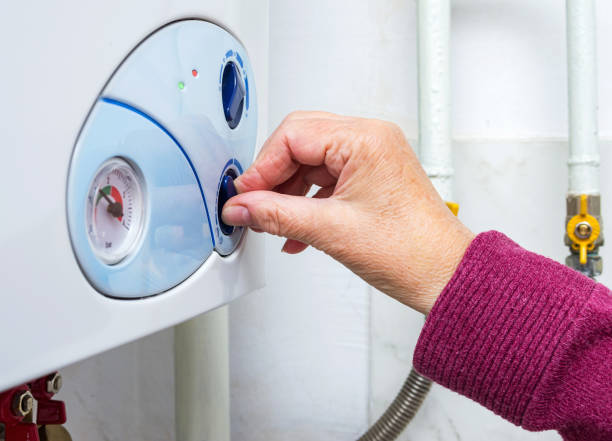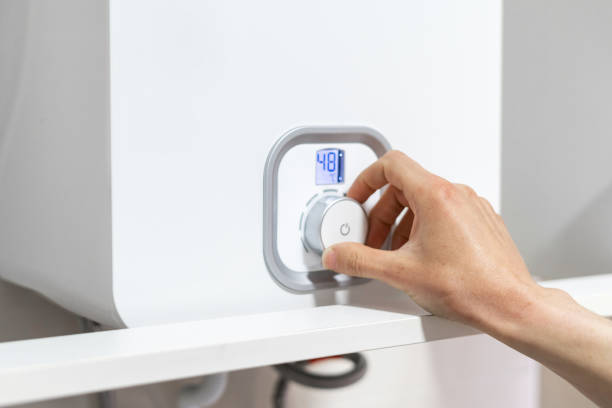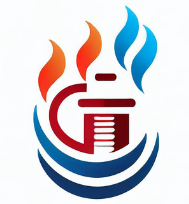
Boilers are the most commonly used heating system in homes and businesses alike. However, to maintain your boiler’s efficiency and ensure that your property is heated properly, it is essential to know how to adjust the water temperature on your boiler.
This may sound daunting, but it’s a straightforward process that can help you save money on your heating bills and extend the lifespan of your boiler. In this post, we will provide a quick guide on how to adjust water temperature on your boiler in the UK.
We’ll cover everything from recognising the signs that your boiler needs adjusting to how to safely and effectively adjust the temperature. So, if you’re ready to take control of your heating system and save money, keep reading!
Why is it important to adjust the water temperature on your boiler?
Adjusting the water temperature on your boiler is not only important for your comfort but also for your safety. If your boiler is set too high, it can cause scalding injuries when using hot water. On the other hand, if the temperature is set too low, it can lead to bacteria growth in the water, which can be hazardous for your health.
It is essential to maintain the proper temperature to ensure the safety of your family and home.
Additionally, adjusting the water temperature can also help you save energy and lower your utility bills. A boiler that is set too high uses more energy than necessary, and therefore, costs more money.
By adjusting the temperature to an appropriate level, you can save on energy consumption and reduce your carbon footprint. Overall, adjusting the water temperature on your boiler is a crucial aspect of maintaining a safe and energy-efficient home.
Signs that your boiler needs adjusting
It is essential to learn how to adjust the water temperature on your boiler in the UK. This is because the temperature will affect your boiler’s efficiency and performance.
You should keep an eye out for signs that your boiler needs adjusting. One of the most common signs is that your radiators are not heating up properly. This can be a clear indication that the temperature is too low and needs to be adjusted.
Another sign that your boiler needs adjusting is that you can hear strange noises coming from it. This can be an indication that the temperature is too high, causing the water to boil and creating steam.
Finally, if you notice that your energy bills are higher than usual, it may be a sign that your boiler is not operating at optimal levels.
A simple adjustment of the water temperature can help to reduce energy costs and improve the overall performance of your boiler. If you notice any of these signs, it is essential to adjust your boiler’s water temperature accordingly to avoid any further problems.
What temperature should my combi boiler be set at for hot water?
When it comes to setting the temperature on your combi boiler for hot water, a recommended temperature range is typically between 50°C and 60°C. However, the optimal setting may vary depending on personal preferences and household needs. Here are a few factors to consider:
Safety: It’s important to strike a balance between hot water temperature and safety. Water temperatures above 60°C can scald and cause injuries, especially for children and the elderly. Setting the temperature within the recommended range helps minimize the risk of burns.
Energy Efficiency: Lowering the temperature can lead to increased energy efficiency and reduced energy costs. Every degree decrease in hot water temperature can make a difference in energy consumption.
Bacterial Growth: Hot water temperature plays a role in preventing bacterial growth, such as Legionella. Higher temperatures can help inhibit the growth of harmful bacteria in the water system.
User Comfort: Consider personal preferences and comfort when setting the hot water temperature. Some individuals may prefer hotter water for activities like bathing or dishwashing, while others may find a slightly lower temperature sufficient.
How to safely adjust the temperature on your boiler

To adjust the water temperature on a boiler, the specific method may vary depending on the type of boiler you have. Here are some general guidelines:
Heat Only Boiler: If you have a heat-only boiler, you can change the temperature of your hot water by adjusting the cylinder stat. Locate the cylinder stat and consult your boiler’s manual for instructions on how to change the temperature. The recommended minimum temperature is usually around 60°C.
Combi Boiler: For a combi boiler, which provides both hot water and heating, you will typically have separate controls for taps and radiators. Adjusting the tap control should not affect the heating temperature. To lower the hot water temperature, turn down the tap control slightly.
Consult the Manual: It’s important to refer to your boiler’s manual for specific instructions on adjusting the water temperature. The manual will provide detailed information on the location of temperature controls and the correct procedure to follow.
Consider Energy Efficiency: When adjusting the water temperature, it’s worth considering energy efficiency. Lowering the temperature slightly can help save energy and reduce heating costs. However, it’s important to maintain a temperature that still provides sufficient hot water for your needs.
Seek Professional Assistance: If you’re unsure or uncomfortable adjusting the water temperature yourself, it’s recommended to seek professional assistance from a qualified heating engineer. They can ensure the adjustment is done correctly and safely.
Adjusting the water temperature on your boiler is an important task that requires careful consideration and attention to detail. It’s important to note that if you are not experienced with boiler systems, it’s best to seek professional help.
However, if you feel comfortable making adjustments to your boiler, there are a few key safety precautions to keep in mind. Firstly, always ensure that the power to the boiler is switched off before beginning any work.
This will prevent any electrical accidents or fires from occurring. Next, you should be aware of the temperature range your boiler should be set to. This information can usually be found in the manufacturer’s instructions or on the boiler itself. Once you have this information, you can then adjust the temperature control on your boiler to the desired setting.
It’s important to make these adjustments slowly and gradually, checking the temperature regularly to ensure you are not exceeding the safe range.
Finally, when you are finished adjusting the temperature on your boiler, make sure you switch the power back on and test the system to ensure it is working properly before using it. By following these simple safety steps, you can make sure that adjusting the temperature on your boiler is a safe and easy process.
Potential Issues of lowering water temperature
| Potential Issues | Explanation |
|---|---|
| Reduced Heating Efficiency | Lowering the flow temperature can result in decreased heating efficiency. The boiler may take longer to reach the desired temperature, affecting overall heating performance. |
| Insufficient Hot Water Supply | Setting the flow temperature too low may lead to inadequate hot water supply, especially during peak demand periods when multiple taps or showers are being used simultaneously. |
| Risk of Microbiological Growth | Lower flow temperatures create an environment suitable for the growth of bacteria and microorganisms. Insufficiently heated water may not effectively prevent the proliferation of harmful pathogens, posing health risks. |
| Increased Boiler Cycling | Lower flow temperatures can cause the boiler to cycle more frequently. Frequent cycling increases wear and tear on boiler components, reducing their lifespan and potentially requiring more maintenance or repairs. |
| Potential for Condensation Issues | In some boiler systems, reducing the flow temperature too much can lead to condensation-related problems. Condensation within the boiler or flue system can cause corrosion and other damage if not designed for condensing operation. |
Conclusion
Adjusting the water temperature on your boiler in the UK is not a complicated process. It is important to know that the recommended temperature for domestic hot water is between 50-60°C.
If the temperature is too high, it can be dangerous, and if it is too low, it can cause bacterial growth. To adjust the temperature, you will need to find the temperature control knob or dial on your boiler and turn it to the desired temperature.
Remember to wait a while before checking the water temperature to ensure that the temperature has stabilised. If you are uncomfortable with adjusting the temperature yourself, you can always seek the help of a professional.
By following these simple steps, you can ensure that your boiler is functioning optimally and delivering hot water at the right temperature for your household’s needs.
